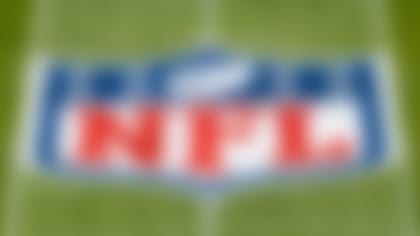On Tuesday, April 9, 2024, NFL Chief Medical Officer Dr. Allen Sills led a discussion with a panel of experts on how the league has made rules changes and driven innovations in protective equipment and helmet impact detection technology that help reduce head impacts to players. The full webinar is available to view below.
Panelists discussed key components of this effort including position-specific helmets and the Guardian Cap, rules changes and how the league is closely working with clubs and partners to gather and share insights and information that can change the way the game is taught across all levels.
The following experts joined Dr. Sills for the webinar:
- Dawn Aponte, Chief Football Administrative Officer, NFL
- Brendan Burger, Equipment Director, Los Angeles Rams and President, Professional Football Equipment Managers Society
- Ann Bailey Good, PhD, Senior Mechanical Engineer, Biocore, LLC
Panelists shared the following takeaways during the conversation:
On how helmet technology innovation has advanced over the past decade at an impressive rate:
Dr. Ann Bailey Good, PhD: "In years past, we may have had one or two new helmets that "topped the charts" as you might say. This year, with five, it really speaks to the new technology that's been built into [the helmets]."
Dr. Ann Bailey Good, PhD: "Manufacturers have started to really embrace the data that has been shared with them [by the NFL and league partners]. Looking at newer technologies that can be used not only to implement in the helmet materials, customizing the fit of helmets, but they've also started to embrace the newer technology when it comes to the actual design of helmets."
On how the NFL has implemented rules changes to remove preventable impacts from certain plays in the game, including recent updates to the kickoff play:
Dawn Aponte: "For several years, Player Health & Safety has been tracking kickoff injury data, so it's been an area of focus...We've had discussions with the Competition Committee, with Owners Health & Safety Committee, and it was something specifically related to concussions, that that injury rate was showing up as 2x the injury rate of a play from scrimmage."
Dawn Aponte: "The focus was trying to keep one of the most exciting plays in football in the game, keeping the foot in the game, increasing the number of returns, but also reducing the injury rate to a rate that was similar to play from scrimmage. There's a ton of credit owed to Special Teams coaches...there was a working group that was formed, all of the Special Teams coaches had a voice in this, they collaborated and the end result was the kickoff proposal – and one in which there were a lot of other stakeholders involved, including medical personnel, our engineers, data and analytics folks, predictive modeling, all those things were taken into account as well as officiating."
On working closely with players to help them choose the safest equipment, and how players experiences inform helmet testing:
Brendan Burger: "I don't care if they're taking the field for a day or a decade, we want them to take the field with the safest equipment we can put them in. It's been great to see over the past four or five years, players knowing about helmet testing, and coming to us to ask about upgrading their helmets and what that might look like. We use the helmet poster as a tool here – have it up in our locker room, training room, our locker room, even in the bathroom. We make it very visible throughout the facility."
Dr. Ann Bailey Good, PhD: "We learn a lot as engineers when we hear about the day-to-day use of helmets and how those helmets are engaging with the athletes, how they're changing the game essentially, so when we're testing in the lab, we want to make sure we're testing them in ways they're going to be used on field."
Brendan Burger: "On fitting day, we like to spend a few minutes with [rookie] players and ask them the history of their helmet – do they know anything about the helmet they've been wearing, if they're happy with the helmet, do they think about putting on a different helmet, if they're aware of the NFL helmet testing. These are all conversations we have, and we try to use that time to educate our young guys. It's crucial, they're making a huge decision on something that could impact the rest of their career."
On how the NFL leads with a data-driven process to reducing head impacts:
Dawn Aponte: "Data drives our decision making and is really at the heart of what we do. In terms of the coaches, what we started doing going back to last season is sharing head impact data with the coaches on a weekly basis, so they were getting reports on an individual player basis, which really enables them to look at that and help to address the player behavior. We also share aggregate data across the league and give them their rankings – offensive line, defensive line – and we've had a lot of coach engagement trying to understand how they can coach players better, how they can teach techniques and fundamentals that really help to reduce the overall number of head impacts."
Dr. Ann Bailey Good, PhD: "It's important for us to understand the types of impacts helmets are sustaining on-field. Do the types of impacts change over time with some of these rules… do the types of impacts that individual positions sustain change, as the game changes? It's important for us to lean on that new data and that new information from some of those impact detection technologies to be able to figure out how we should change the way that we're evaluating helmets so we know we're getting the best data available to the players, so they can make the best choice available for them… We fully believe in the data-driven process, because we've seen that it works."











